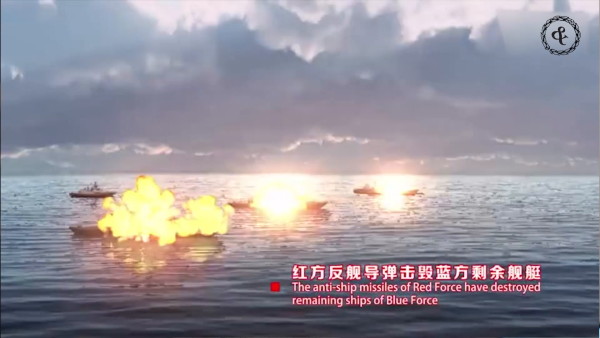

If you’ve paid even the slightest bit of attention in the last few years, you know that the Pentagon has been zeroing in on the threat that China and Russia pose, and the future battles it anticipates.
The Army has followed suit, pushing to modernize its force to be ready for whatever comes its way. As part of its modernization, the Army adopted the Multi-Domain Operations (MDO) concept, which serves as the Army’s main war-fighting doctrine and lays the groundwork for how the force will fight near-peer threats like Russia and China across land, air, sea, cyber, and space.
But in an internal document obtained by Task & Purpose, the Army Transition Team for the new Chief of Staff, Gen. James McConville, argues that China poses a more immediate threat than Russia, so the Army needs make the Asia-Pacific region its priority while deploying “minimal current conventional forces” in Europe to deter Russia.

Screen-shot from the ATT document.
“Instead of focusing on fielding a fully modernized force to [U.S. European Command], an alternative may be to deter Russia with minimal current conventional forces, and permit the Army to shift strategic focus for modernization efforts to [U.S. Indo-Pacific Command],” the ATT suggests in the document.
The ATT say China is “anticipated to surpass Russia as the greater competitor to the United States in a 2028 to 2035 timeframe,” and recommends that the Army ” Russia in the near-term with a ‘good enough’ force in Europe, while investing in the long-term requirements against the larger threat in Asia.”
In order to carry this out, the transition team suggests that the Army could expand partner-building capacities and combined training in Europe; improve command and control capabilities; “marginally increasing Army combat power in EUCOM;” and more.
In turn, the Army could field its newest and most modern capabilities to forces in INDOPACOM, and make that theater its priority in order to push back on China.
The first option, which the ATT ultimately did not recommend, was for McConville to focus on “fielding new multi-domain formations,” which the transition team says would allow the Army to “create irreversible momentum and establish an MDO ‘foothold.'”
“The National Defense Strategy clearly establishes that this is an era of great power competition with an emphasis on the Indo-Pacific and Europe,” Gen. McConville’s spokesperson, Army Lt. Col. Curtis Kellogg, told Task & Purpose. “Gen. McConville is committed to modernizing the Army’s doctrine, equipment, and processes in support of the National Defense Strategy.”
The recommendation from ATT is just that — a recommendation — and the team ultimately defers to the Army staff to “conduct a more comprehensive analysis to further understand the second and third order effects” of the two options they present. But in order to stay on track and have a MDO-capable force by 2028, which is the deadline the service has been aiming for, the ATT says that senior Army leaders may need to have decisions made sooner rather than later.
